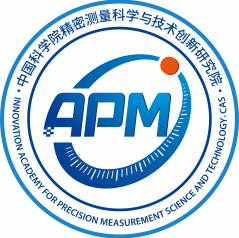Magnetic Resonance Letters
Magnetic Resonance Letters
Magnetic Resonance Letters (MRL) is an open access journal that publishes research articles, communications and reviews on all aspects of magnetic resonance. The journal encompasses research on in vi...
Magnetic Resonance Letters (MRL) is an open access journal that publishes research articles, communications and reviews on all aspects of magnetic resonance. The journal encompasses research on in vivo magnetic resonance imaging (MRI), functional magnetic resonance imaging (fMRI), magnetic resonance spectroscopy (MRS), high-resolution liquid and solid-state nuclear magnetic resonance (NMR), electron spin/paramagnetic resonance (ESR) and nuclear quadrupole resonance (NQR), etc.
The journal seeks papers on novel and significant developments in the physical principles underlying spectroscopies, methodologies and applications of magnetic resonance in medicine, chemistry, biology, pharmacology, neuroscience, geochemistry, food science and related fields. Research related to clinical applications is strongly encouraged.

Society affiliation
Magnetic Resonance Letters is sponsored by Innovation Academy of Precision Measurement Science and Technology, Chinese Academy of Sciences (hereinafter referred to as APM). In the early days of the Wuhan Institute of Physics and Mathematics, CAS (WIPM, CAS), one of the predecessors of APM, renowned physicist Mr. Wang Tianjuan, returned to China and...
Magnetic Resonance Letters is sponsored by Innovation Academy of Precision Measurement Science and Technology, Chinese Academy of Sciences (hereinafter referred to as APM). In the early days of the Wuhan Institute of Physics and Mathematics, CAS (WIPM, CAS), one of the predecessors of APM, renowned physicist Mr. Wang Tianjuan, returned to China and established the discipline of magnetic resonance spectroscopy in China. After that, several generations of scientists including academician Chao-hui Ye, have taken the mission of serving the country with science and technology to heart, and have developed nuclear magnetic resonance methods and spectrometer technology, marching on the forefront of the world's magnetic resonance discipline. After decades of development, the Institute has continuously consolidated its disciplinary foundation and achieved a number of international leading achievements in the field of magnetic resonance, and has built a number of national and provincial magnetic resonance research platforms, such as the State Key Laboratory of Magnetic Resonance and Atomic and Molecular Physics, the National Center for Magnetic Resonance in Wuhan, and CAS Key Laboratory of Magnetic Resonance in Biological Systems. APM has always been committed to promoting the development of magnetic resonance spectroscopy. It is also recognized as one of the most important centers in the field, representing the highest level of magnetic resonance research in China, and hence being supported with considerable scientific resources to publish a first-class English magnetic resonance journal.
The Committee of Magnetic Resonance Spectroscopy, Chinese Physical Society
Established in May 1981, the Committee of Magnetic Resonance Spectroscopy is affiliated with the Chinese Physical Society. The Committee aims at building a platform for domestic and international academic exchanges in the field of spectroscopy and its related fields, such as physics, chemistry, biology, medicine, materials, information, etc.Link:http://www.cps-net.org.cn/home/index/index_en.do
About the Cover
News
Call for papers
Special issue on magnetic resonance in porous media
Submission deadline: 15 December 2022

 Maili Liu
Maili Liu







